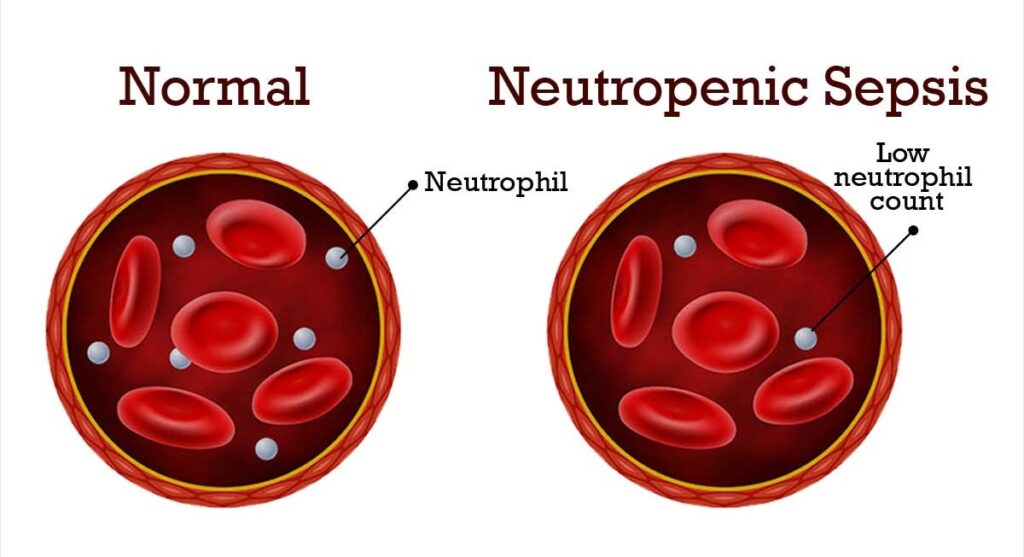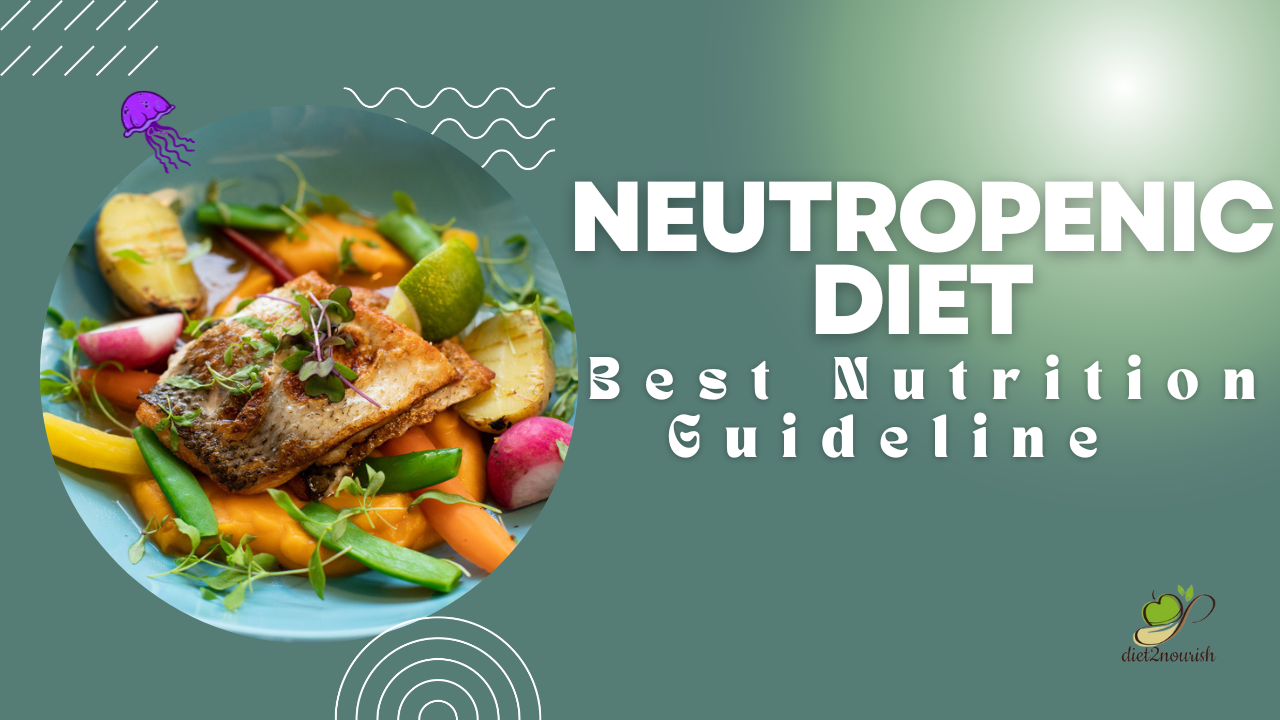Neutropenic Diet
Combat weakened immune systems with appropriate Neutropenic diet. Furthermore, this diet is thoroughly explained here.
If you are looking for enlightenment on the Neutropenic diet and have got no clue, then you are about to get to know a lot!
This diet is practised with certain guidelines based on the cooking, storage and consumption of food. It particularly revolves around sanitation of personal space as well as food consumed.
It is not as hard as it seems. Moreover, you can also find a variety of dessert options while being on a Neutropenic diet here.
You do not need to compromise your taste buds for this. All you need to ensure is that you do not consume any bacteria or microbes!
What is a neutropenic diet?

A neutropenic diet is a diet that’s low in bacteria to help protect people with weakened immune systems from infections.
Furthermore, a neutropenic diet is typically recommended for people who have low white blood cell counts. Such conditions can occur as a result of cancer treatment, bone marrow transplants, or other medical conditions.
In addition, this diet involves avoiding certain foods that can increase the risk of infection. It includes foods such as raw fruits and vegetables, undercooked meat, and unpasteurized dairy products.
Another names for a Neutropenic diet
Another name for a neutropenic diet is a low bacteria diet.
What is the goal of a Neutropenic diet?
The goal of a Neutropenic diet is to reduce the amount of bacteria that a person is exposed to. A Neutropenic diet aims to help prevent infections and other complications.
Furthermore, this diet involves avoiding certain foods that can increase the risk of infection. It includes foods such as raw fruits and vegetables, undercooked meat, and unpasteurized dairy products.
Diseases that need a Neutropenic diet
A neutropenic diet is typically recommended for
- people with weakened immune systems
- People undergoing chemotherapy
- People undergoing radiation therapy for cancer
- People who have had bone marrow transplants
- People with HIV/AIDS
- People suffering from lupus
Guidelines for a Neutropenic Diet
Some general guidelines for a neutropenic diet include:
● Avoiding raw or undercooked foods
It is important to avoid raw or undercooked foods as these can contain harmful bacteria that can cause infection.
● Washing hands and kitchen surfaces frequently
It is also important to wash hands frequently before preparing meals and eating. Moreover, it is necessary to clean kitchen surfaces frequently to reduce the risk of contamination.
● Avoiding cross-contamination of foods
Cross-contamination of foods should be avoided to ensure safety and sanitation.
● Avoiding certain high-risk foods
High risk foods such as unpasteurized dairy products, raw or undercooked meat and poultry must be avoided. Furthermore, it is also recommended to avoid raw or uncooked fruits and vegetables.
● Avoid smoked seafood
This kind of food is typically labelled as “lox,” “kippered,” “nova style,” or “jerky.”
Foods to include in a Neutropenic diet
Here are some points to explain the foods that are generally safe to include in a neutropenic diet:
1) Well-cooked vegetables
Vegetables should be cooked until they are soft and well done. This is to reduce the risk of infection due to microbes in undercooked or uncooked vegetables.
2) Canned or cooked fruits
Canned or cooked fruits are generally safe to eat because they have been processed to kill bacteria. Moreover, they are free from any risks and can be included in the diet.
3) Pasteurised dairy products
Pasteurization is a process that kills bacteria. Therefore, dairy products that have been pasteurised are generally safe to consume.
4) Well-cooked meats and poultry
Meats and poultry should be cooked until they are well done. This is done to eliminate any microorganisms and pathogens that can enter the body. In addition, it is to reduce the risk of infection.
5) Cooked grains
Grains such as rice, quinoa, and pasta are generally safe to eat if they are cooked thoroughly. Moreover, they are rich in nutrients.
6) Fresh foods
It is important to choose foods that are fresh and organic. Moreover, choose high-quality foods that are free from contamination to reduce the risk of infection.
Furthermore, it is important to eat a variety of foods to ensure that all nutrient needs are being met. Include various nutrient-rich foods in your diet. However, perform various measures and obey the above-stated guidelines to avoid any contamination.
What are some dessert ideas that can be included in a Neutropenic diet?
Anyone can get a sweet tooth. To satiate your sugar cravings, we have some amazing healthy dessert ideas. Furthermore, these desserts will not mess up with your Neutropenic diet.
- Refrigerated and homemade cakes and puddings
- Refrigerated pastries
- Homemade cookies
- Cream-filled cupcakes
- Shelf-stable fruit pies
- Commercially packaged ice cream
- frozen yoghourt
Beverages you can consume in a low bacteria diet
Here is a list of beverages you can consume while following a Neutropenic diet
● Pasteurised juices
Juices that are pasteurised are generally safe to consume because the pasteurisation process kills bacteria.
● Bottled water
Bottled water is generally safe to consume if it is from a reputable source. Moreover, proper storage also matters so make sure it has been properly stored.
● Tea and coffee
Tea and coffee are safe to consume if they are made with boiled milk water.
Iced tea and iced coffee
In this case, these iced beverages must be made from milk that has been boiled before and then refrigerated.
● Pasteurised milk
Milk that has been pasteurised is generally safe to consume because the pasteurisation process kills bacteria.
Worst foods to avoid in a Neutropenic diet
Get to know about all the worst foods you must avoid when following a Neutropenic diet:
1. Dairy products
- Raw milk
- Homemade eggnog and yoghourt
- Cheese made from unpasteurized milk
- Mould-ripened cheeses
- Fermented dairy products, such as kefir
2. Meat and seafood
- Undercooked or raw meats and poultry
- Raw or partially cooked fish and shellfish
- All clams, mussels, and oysters (raw or cooked)
- Refrigerated pâtés and meat spreads
- Hard-cured salami in a natural casing
3. Egg products
- Undercooked eggs
- Unpasteurised egg products
- Raw eggs
- Foods containing raw eggs, such as Caesar dressing or mayonnaise
4. Fruits and veggies
- Unwashed raw or frozen fruits and vegetables
- Any rough-textured fruits and vegetables that can’t be thoroughly washed including strawberries, raspberries, broccoli, and cauliflower
5. Foods that are past their expiration date
Foods that are past their expiration date can contain harmful bacteria. Furthermore, such foods can increase the risk of infection.
Worst beverages to exclude in a neutropenic diet
Follow your Neutropenic diet plan with utmost care by avoiding these beverages.
- Unpasteurized eggnog, cider, and fruit or vegetable juices
- Unpasteurized milk, soy milk and dairy
- Fountain soda and other fountain beverages
- Tea made with loose leaves
- Beverages from the restaurants
Lifestyle changes for efficient results with a Neutropenic diet
Here are some points to elaborate on the lifestyle changes. In addition, such changes can help achieve efficient results with a neutropenic diet:
1) Practising good hygiene
Practising good hygiene can help in reducing the risk of infection. This includes washing your hands frequently and using hand sanitizer. Moreover, it also includes keeping your living space clean.
2) Avoiding contact with sick individuals
Avoiding contact with sick individuals can help reduce the risk of infection. In addition, it includes avoiding crowds and staying away from individuals who are sick.
3) Avoiding large crowds
Avoiding large crowds can help reduce the risk of infection. Moreover, this includes avoiding concerts, sporting events, and other large gatherings.
4) Getting enough rest
Getting enough rest can help improve overall health while reducing the risk of infection. Furthermore, it is important to get at least 7-8 hours of sleep each night.
5) Managing stress
Managing stress can help improve overall health and reduce the risk of infection. This includes practising relaxation techniques, such as deep breathing, yoga and meditation.
6) Staying hydrated
Staying hydrated can help improve overall health and flush out body toxins. Furthermore, it is important to drink at least 8-10 glasses of water each day.
Dos and don’ts while following a Neutropenic diet
Here are some dos and don’ts to follow while on a neutropenic diet:
Dos:
1. Eat a variety of nutrient-dense foods.
2. Cook foods to the appropriate temperature to kill harmful bacteria.
3. Wash fruits and vegetables thoroughly before eating and try not eating them raw.
4. Use pasteurised dairy products.
5. Maintain good hygiene and avoid contact with sick individuals.
6. Get enough rest and manage stress.
7. Stay hydrated by drinking plenty of water.
Don’ts:
1. Eat raw or undercooked meats, poultry, seafood, or eggs.
2. Consume unpasteurized dairy products.
3. Eat raw or undercooked fruits and vegetables.
4. Consume foods that are past their expiration date.
5. Eat foods that are not fresh, high-quality, or free from contamination.
6. Be in close proximity to individuals who are sick.
7. Participate in activities that may increase the risk of infection.
The bottom line
Neutropenic diet is a low bacteria diet. It requires a lot of sensitivity and specific guidelines. They are to ensure proper safety and recovery.
Certain medical conditions require a Neutropenic diet. It is specifically to reduce the risk of infection in individuals with weakened immune systems.
This can be achieved by avoiding raw or undercooked meats, poultry, seafood, and eggs. Furthermore, unpasteurized dairy products, raw or undercooked fruits and vegetables are avoided.
It’s also important to maintain good hygiene, stay hydrated, and follow any additional precautions recommended by your healthcare provider or registered dietitian.
Frequently asked questions (FAQs)
Can I eat in a restaurant while on a neutropenic diet?
Answer:
It is recommended to avoid eating out while on a neutropenic diet. This is because it can be difficult to ensure that foods are cooked to the appropriate temperature to kill the various bacteria and microbes in foods. Moreover, you do not know their degree of sanitation and the environment they cook and cut food in. In addition, it is difficult to ensure that the food is free from contamination.
Can I eat sushi while on a neutropenic diet?
Answer:
It’s generally recommended to avoid raw or undercooked seafood. This also includes sushi. Therefore, you can not eat sushi while on a neutropenic diet.







